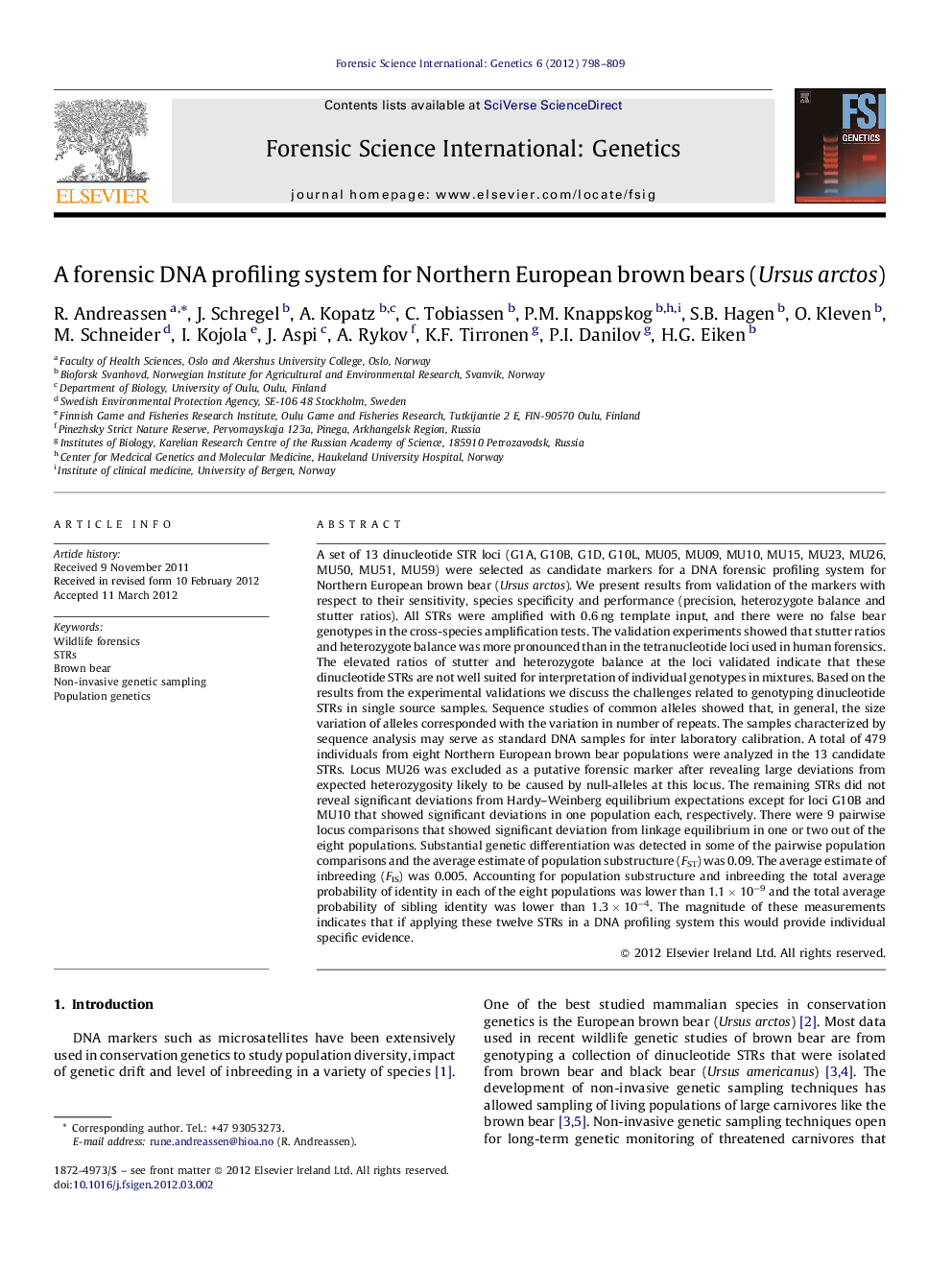| کد مقاله | کد نشریه | سال انتشار | مقاله انگلیسی | نسخه تمام متن |
|---|---|---|---|---|
| 99306 | 160943 | 2012 | 12 صفحه PDF | دانلود رایگان |

A set of 13 dinucleotide STR loci (G1A, G10B, G1D, G10L, MU05, MU09, MU10, MU15, MU23, MU26, MU50, MU51, MU59) were selected as candidate markers for a DNA forensic profiling system for Northern European brown bear (Ursus arctos). We present results from validation of the markers with respect to their sensitivity, species specificity and performance (precision, heterozygote balance and stutter ratios). All STRs were amplified with 0.6 ng template input, and there were no false bear genotypes in the cross-species amplification tests. The validation experiments showed that stutter ratios and heterozygote balance was more pronounced than in the tetranucleotide loci used in human forensics. The elevated ratios of stutter and heterozygote balance at the loci validated indicate that these dinucleotide STRs are not well suited for interpretation of individual genotypes in mixtures. Based on the results from the experimental validations we discuss the challenges related to genotyping dinucleotide STRs in single source samples. Sequence studies of common alleles showed that, in general, the size variation of alleles corresponded with the variation in number of repeats. The samples characterized by sequence analysis may serve as standard DNA samples for inter laboratory calibration. A total of 479 individuals from eight Northern European brown bear populations were analyzed in the 13 candidate STRs. Locus MU26 was excluded as a putative forensic marker after revealing large deviations from expected heterozygosity likely to be caused by null-alleles at this locus. The remaining STRs did not reveal significant deviations from Hardy–Weinberg equilibrium expectations except for loci G10B and MU10 that showed significant deviations in one population each, respectively. There were 9 pairwise locus comparisons that showed significant deviation from linkage equilibrium in one or two out of the eight populations. Substantial genetic differentiation was detected in some of the pairwise population comparisons and the average estimate of population substructure (FST) was 0.09. The average estimate of inbreeding (FIS) was 0.005. Accounting for population substructure and inbreeding the total average probability of identity in each of the eight populations was lower than 1.1 × 10−9 and the total average probability of sibling identity was lower than 1.3 × 10−4. The magnitude of these measurements indicates that if applying these twelve STRs in a DNA profiling system this would provide individual specific evidence.
Journal: Forensic Science International: Genetics - Volume 6, Issue 6, December 2012, Pages 798–809